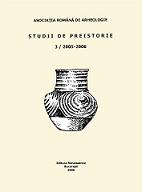Începutul eneoliticului în Dobrogea: între prejudecăţi şi certitudini
The beggining of the Eneolithic in Dobrogea: between the prejudices and certainties
Author(s): George Neagu, Valentina VoineaSubject(s): Archaeology
Published by: Editura Cetatea de Scaun
Keywords: ceramic imports; cultural symbioses; Precucuteni III; Hamangia; Boian; absolute date
Summary/Abstract: The theory of the permanently ascending linear evolution of humanity, without pauses or acculturations, was embraced, consciously or unconsciously, by numerous researchers, thus reaching the stereotypical image of the synchronous phases, without any coherent stratigraphic argumentation. Starting from this interpretation misconception, cultures, phases and sub-phases were defined, only on the basis of sherds discovered accidentally or selected more according to artistic criteria than to the stratigraphic context. The quality of the ceramics, determined by the natural resources characteristic to every region as well as by the talent of the potters, must not constitute a criterion of relative dating. We underline this aspect because, lacking the absolute data, many contemporary regional peculiarities have been considered as successive in the course of time, thus artificially segmenting cultural phenomena manifested on vast geographical areas. The situation becomes even more complex in the contact areas where mixed cultural aspects have come into being, aspects which are hard to attribute to one or the other of the neighbouring cultures. Dobrudja, owing to its geographical positioning, has represented an area of cultural interferences and, implicitly, a space where the dynamics of habitation cannot be glimpsed only on the basis of some ceramic imports. This is where the numerous uncertainties and the interpretation errors, artificially established synchronicities, periodizations and unargumented conclusions originate from. From the multitude of the expressions of this genre, we will only dwell on a few. D. Berciu periodized the Hamangia culture thus: “The typological study and the stratigraphic observations do not allow us yet to clearly distinguish the 4th period from the 3rd period and from the 5th period. Thus, the 4th period remains an open problem, although there are elements on the basis of which we could perceive the typological-chronological interval between the 3rd and the 5th periods, which was occupied by the 4th period.” (D. Berciu 1966, p. 110). Lacking stratigraphic arguments, the only explanation of this separation would be the rigid equivalence with the five phases of the Boian culture, established by the same author.
Journal: Studii de Preistorie
- Issue Year: 2005
- Issue No: 3
- Page Range: 149-161
- Page Count: 12
- Language: Romanian

